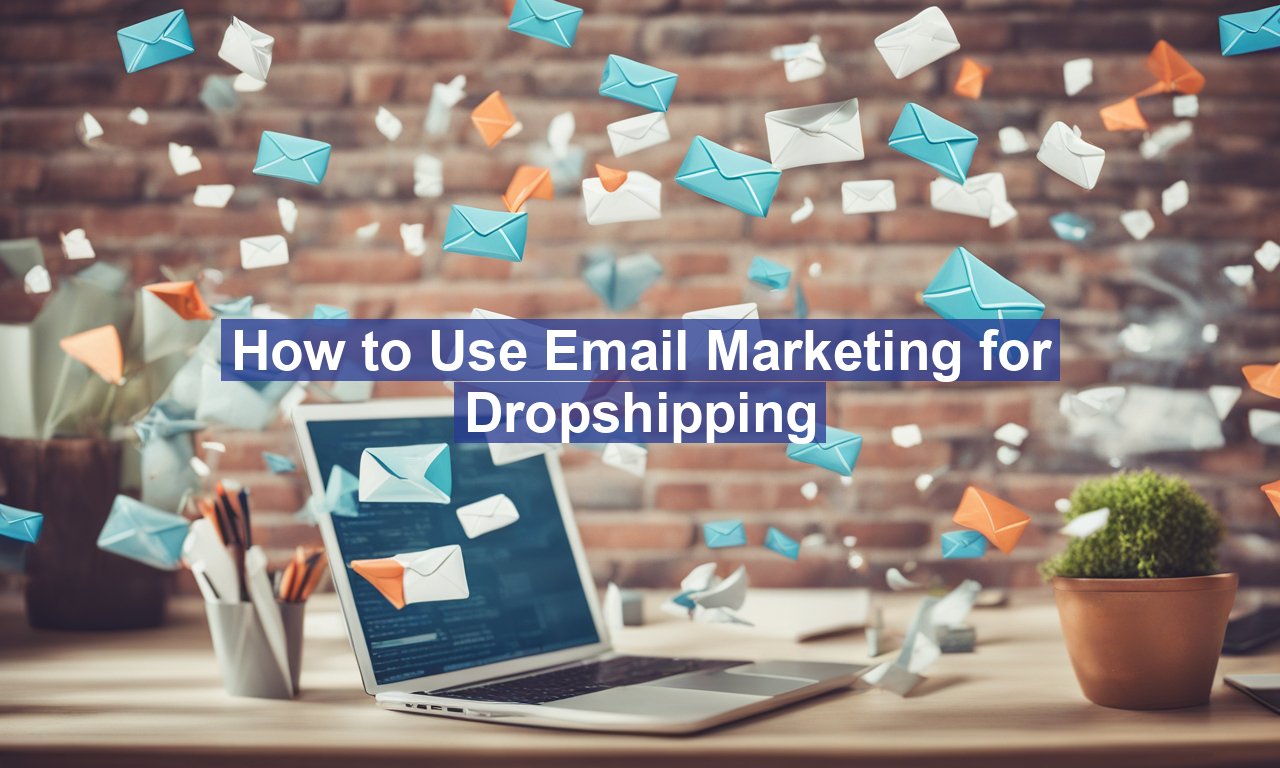How to Use Email Marketing for Dropshipping In the rapidly evolving world of e-commerce, dropshipping has become a popular business model thanks to its low startup costs and flexibility. However, succeeding in this space requires more than just sourcing the right products—it involves connecting with your audience and turning potential buyers into loyal customers. That’s where email marketing comes in. By leveraging this powerful tool, you can not only keep your audience engaged but also significantly boost your revenue.
This article will guide you through the nuances of using email marketing specifically for dropshipping.
How to Use Email Marketing for Dropshipping Step-by-Step Guide
Why Email Marketing is Essential for Dropshipping
Email marketing is especially effective for dropshipping businesses for several reasons:
- Direct Communication: Email allows you to communicate directly with your customers, ensuring they receive your messages without the interference of social media algorithms.
- Cost-Effective: Compared to other forms of advertising, email marketing is relatively inexpensive, providing a significant return on investment.
- Personalization: You can tailor your emails to address the specific needs and interests of individual customers, boosting engagement and conversion rates.
Building Your Email List
The foundation of any successful email marketing campaign starts with a strong email list. Here’s how you can build yours effectively:
Offer Incentives
Encourage visitors to sign up for your newsletter by offering incentives such as:
- Exclusive discounts or promotions
- Free eBooks or other digital resources
- Entry into a contest or giveaway
These perks give potential customers a tangible reason to share their email address with you.
Optimize Your Signup Forms
Utilize strategic placement for your signup forms to capture user attention. Consider these suggestions:
- Pop-up Forms: These can be effective, but ensure they don’t disrupt the user experience by setting them to appear after a specific time interval.
- Embedded Forms: Position these on high-traffic pages like your homepage or a popular blog post.
- Exit-Intent Technology: Trigger these forms when a visitor indicates they’re about to leave your site, serving as a last attempt to capture their interest.
Crafting Effective Email Campaigns
Once you’ve built your list, the next step is to craft compelling email campaigns that resonate with your audience.
Segment Your Audience
Segmentation is crucial in sending targeted messages that speak to the diverse interests of your customer base. Consider segmenting based on:
- Demographic information (age, gender, location)
- Purchase history
- Engagement level (frequent vs. infrequent buyers)
According to HubSpot, emails that are segmented and targeted are more likely to result in higher click-through rates and conversions.
Personalize Your Emails
Use personalized elements in your emails to make subscribers feel valued. Simple additions, like including their name in the subject line or tailoring content based on past purchase behavior, can significantly impact engagement. For more on personalization, check out Mailchimp’s guide on email personalization.
Design Visually Appealing Emails
The design of your emails can greatly affect their performance. Here are some tips to ensure yours are visually appealing:
- Use high-quality images that showcase your products.
- Maintain a consistent color scheme that reflects your brand.
- Utilize clear and concise calls to action (CTAs) to guide reader behavior.
Don’t forget to optimize your emails for mobile devices, as a significant portion of users will access them on their phones.
Analyzing the Results
Measuring the success of your email marketing efforts is critical to understanding what works and what doesn’t. Here’s how you can analyze your campaigns:
Set Clear KPIs
Identify key performance indicators (KPIs) such as open rates, click-through rates, and conversion rates to track your campaign performance. These metrics will offer insights into how well your emails are performing and allow you to make data-driven decisions.
Conduct A/B Testing
Experiment with different email elements, from subject lines to design layouts, through A/B testing. This process will help you identify which strategies are most effective in engaging your audience.
By continuously refining your approach based on performance data, you can optimize your email marketing strategy for even greater success.
Conclusion
How to Use Email Marketing for Dropshipping is a formidable tool for dropshipping businesses, enabling direct communication with customers and promising high returns on investment. By focusing on building a strong email list, crafting personalized and engaging content, and analyzing the results, you can drive conversions and foster a loyal customer base. Harness the power of email marketing today and watch as your dropshipping business thrives in the competitive e-commerce landscape.


